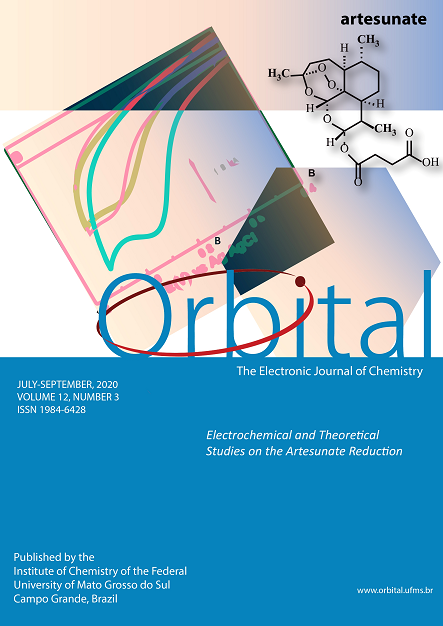- AIM analysis,
- density functional theory,
- penicillamine,
- quantum molecular descriptors
Copyright (c) 2020 Orbital: The Electronic Journal of Chemistry

This work is licensed under a Creative Commons Attribution-NonCommercial-NoDerivatives 4.0 International License.
Abstract
In this study, cyclic peptide (CP) with cyclooctaglycine model and gold nanoparticles (AuNP) with Au6 cluster model were used to examin the function of penicillamine (PCA) drug on ten different configurations of cyclic peptide-gold nanoparticles (CPAuNP). Binding energies, quantum molecular descriptors such as electrophilicity power (ω), global hardness (η), and solubility energies were studied in aqueous solution and gas phase at the M06-2X density functional level. The binding energy analysis was performed on (CPAuNP/PCA1-10) structures to determine the most stable structure. The obtained values for solvation energies indicate that CPAuNPs can have an effective performance when used along with PCA drug, which is a major factor in drug delivery. The quantum molecular descriptors reveal that the reactivity of cyclic peptide (CP) and PCA drug increases in (CPAuNP/PCA1-10) structures. AIM calculations for all structures show that intermolecular hydrogen bonding and Au-L (L = H, O, S, C, N) interactions play an important role for this drug delivery system. When the PCA drug is parallel to the CPAuNP carrier, interacting simultaneously with CP and AuNP, the structure is more stable than the structures in which the drug has interactions only with the CP or AuNP.

